БЕЗ НАЗВИ / 2020 Академія мистецтв України, Київ У проєкті “Без назви” через тему “соціального пейзажу” художник продовжує досліджувати взаємовплив урбаністичного середовища та його мешканців, присутність яких завжди відчутна у типових міських ландшафтах. Поряд із цим у авторському висловлюванні постає тема неочевидної, але значимої присутності альтернативних мистецьких спільнот у загальному художньому полі. Експозиція містить офорти із проєкту “Шум”, де автор зафіксував повсякденні ландшафти міських окраїн, на перший погляд нічим не примітні, але такі, що мають для нього особисте значення. Виконані в естетиці та у розмірах звичних для пострадянського ока фотошпалер, напротивагу ескапістським тропічним пальмам чи гірським озерам, монохромні багатоповерхівки Ковача зображують буденність, естетику, яка так чи інакше вплинула на цілі покоління. Навмисне знеособлені автором пейзажі, у яких складно ідентифікувати конкретні місця, стають втіленням певного середовища існування, впізнаваного, попри свою безликість, і в чомусь рідного для кожного, хто у ньому сформувався. Позбавлені людей, ці простори, однак, сповнені незримої, але відчутної присутності своїх мешканців, котрі впливають на ці ландшафти так само, як і ті на них. Поряд із пейзажами — відбитки “підлог”, критично-іронічний проєкт, що переосмислює академічну техніку через виключення автора і елементу рукотворності із процесу роботи, доводячи до крайності спосіб “полегшення” кропіткої технології створення офорту, десакралізуючи “найелітарнішу” графічну техніку. І при цьому унаочнюючи, що позбавлення елітарності, втім, не позбавляє офорт його особливої естетики. Ці естампи — відбитки безлічі слідів людських ніг, залишених на пластинах у різних альтернативних мистецьких локаціях Києва та України. Своєрідний архів пам’яті про ці знакові неформальні місця, деякі з яких вже не існують. Відбиток процесів, що вирують зовсім поряд і водночас далеко від академічного мистецького життя, і в той же час саме вони формують цілісну художню систему. І найвідчутніша присутність все ще незримої в проєкті людини, того самого міського мешканця, — у тьмяних лайтбоксах. Апелюючи до ще одного впізнаваного елементу повсякденної міської естетики, художник знову відходить від формальної вивіреності і строгості візуальної мови. У невимушеній, майже наївaній манері продряпані на кіптяві малюнки та написи відсилають до вкрай архаїчної і водночас завжди актуальної практики самовираження. Ці навмисно несміливі і не надто розбірливі знаки, наче вихоплені художником із потоку колективного несвідомого, у своїй пустотності лишають багато простору для недосказаного і того, що ще може бути сказано. Конструкції з нефарбованого гіпсокартону і металевого профілю, що служать основою для принтів — також невід’ємна частина інсталяції, відзвук стану невизначеності й естетики перманентної незавершеності, вічного будівництва, що є однією з ключових ознак сьогоднішнього повсякдення. Поєднуючи станкове і монументальне, експозиція як цільна і самодостатня структура взаємодіє з масивною архітектурою будівлі та інтер’єром зали, протиставляючи свою нарочиту незавершеність оточуючій епічності. Ця інтервенція в «серце» офіційної системи — Академії мистецтв, легітимуючої структури — делікатне, але наполегливе підважування академічних канонів як у освітній системі, так і в художній системі загалом. кураторка: Анна Сороковая
UNTITLED / 2020 Academy of Arts of Ukraine In his project ‘Untitled’, the artist keeps discovering the mutual influence of urban environment and its inhabitants, whose presence is always noticeable on typical urban landscape. At the same time, the work raises the question about much less obvious, but important presence of alternative communities in the common art field. The exposition features the etchings from the project ‘Noise’, where the author depicted the quotidian landscapes of the urban outskirts, completely trivial at first glance, but of a huge personal significance to him. Made as photo wallpapers, totally ordinary in terms of style and dimensions to the post-soviet spectator, as opposed to escapist tropical palm trees or mountain lakes, Kovach’s monochrome blocks of flats depict mundanity, the aesthetic that influenced whole generations in one way or another. These landscapes, deliberately depersonalized, demonstrating hardly identifiable locations, become imprints of a certain environment of existence, recognizable despite its anonymity, somewhat familiar to everyone, who grew up there. Stripped of human presence, these spaces are still full of invisible yet sensible presence of their dwellers influencing them as much as vice versa. Next to the landscapes are the imprints of the floors. A critically-ironic project reconsidering the academic technique by excluding the author and the hand-made aspects from the process of work takes the facilitation of toilsome etching technology to the extreme, at the same time desacralizing the most luxurious graphical technique. Despite this, the special aesthetic of etching remains intact. These prints are actually numerous footprints left in various art locations of Kyiv and Ukraine. This is a specific archive of memory of these informal places of significance, some of which do not exist anymore, a trace of the process happening somewhere in the immediate vicinity yet at the same time far from academic art life. It is these places that complete the whole artistic system. The still invisible human being, that very silhouette of the urban dweller, acquires the greatest palpability in the dark lightboxes. Alluding to another familiar element of the ordinary urban aesthetic, the artist diverges yet another time from formal consistency and strict visual language. The pictures and inscriptions scratched on soot in a free, almost naïve way, allude to the most archaic yet perpetually relevant manner of self-expression. These deliberately timid and not too articulate signs, as if having been caught by the artist from the flow of the collective unconscious, leave much space for the things untold. The constructions made of unpainted plasterboard and structural metal shapes holding the prints are also integral part of the installation. They reflect the state of uncertainty and the aesthetic of permanent incompleteness and the never-ending process of construction, that are key features of modernity. Merging the easel and the monumental elements, the exposition as a whole and self-sufficient structure interacts with the massive architecture of the building and the hall’s interior, setting its deliberate incompleteness against the surrounding formality. This intervention to the heart of an official system, such as the Academy of arts, that is the legitimizing entity, delicately but steadily undermines the academic canons in the educational system as well as in the art system in general. curator Anna Sorokovaya | 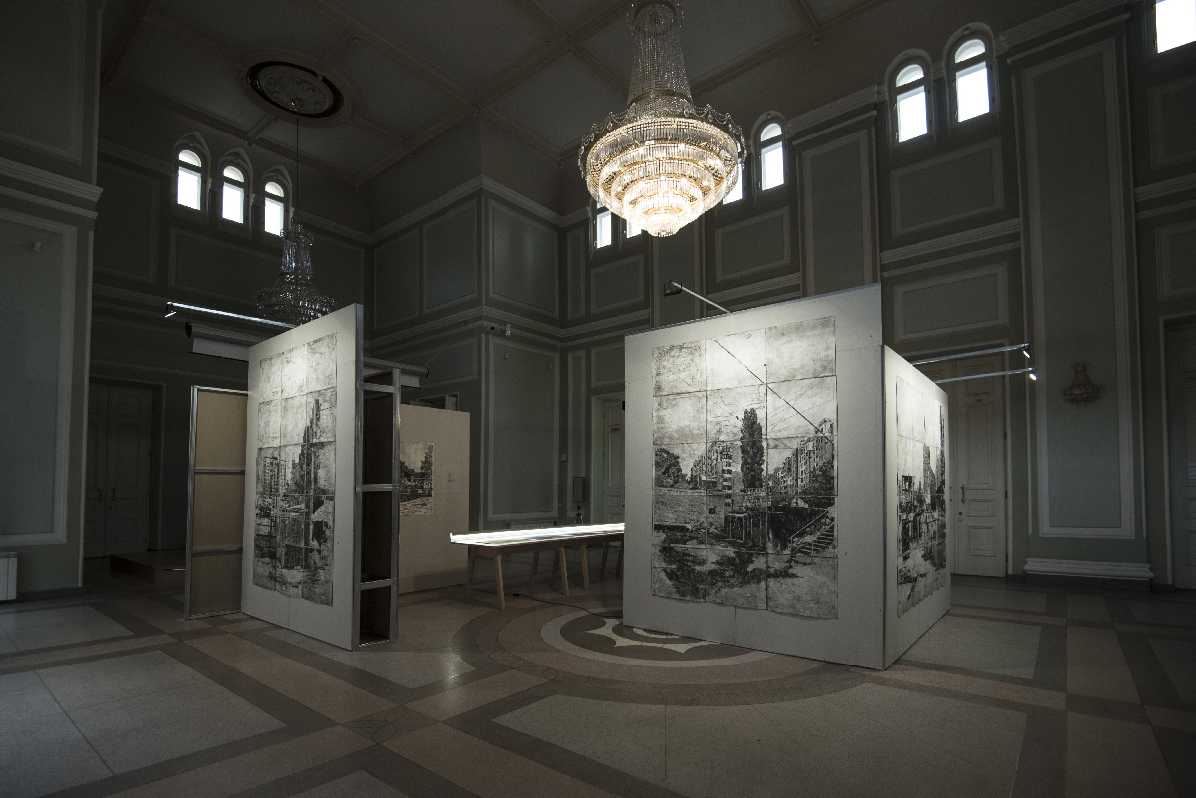 | 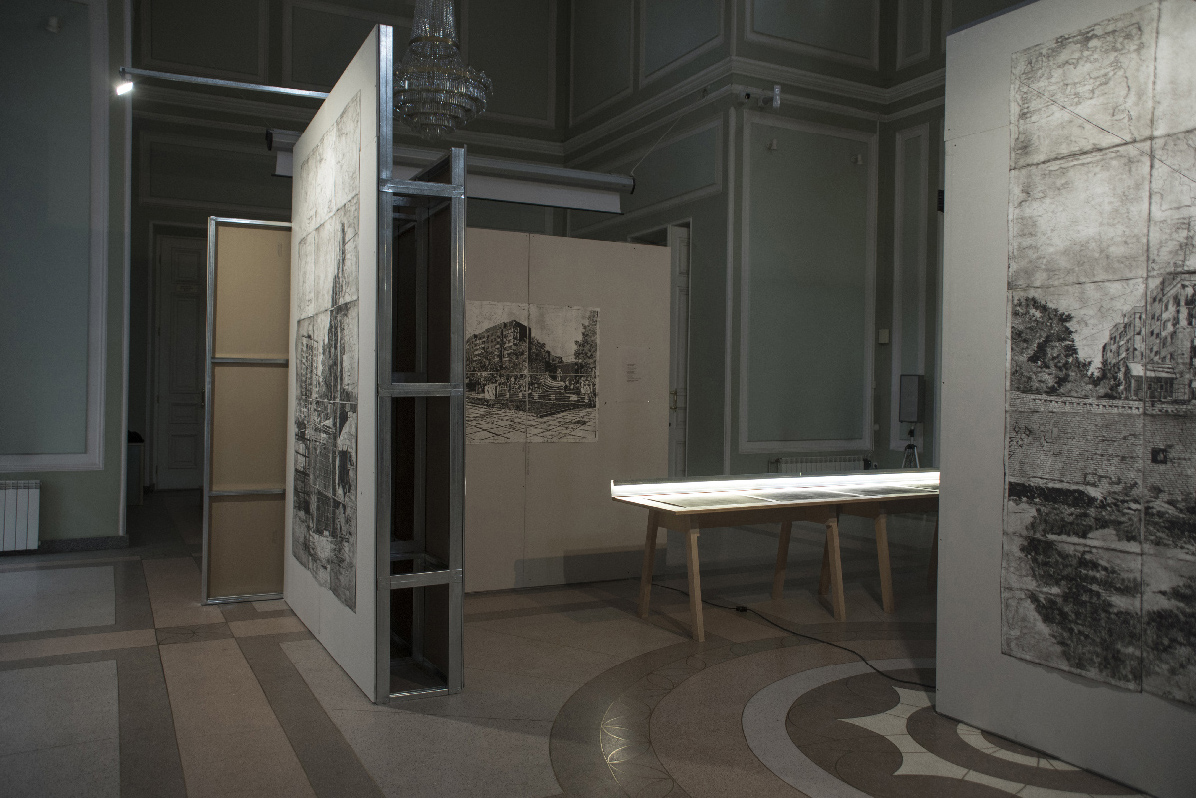 | 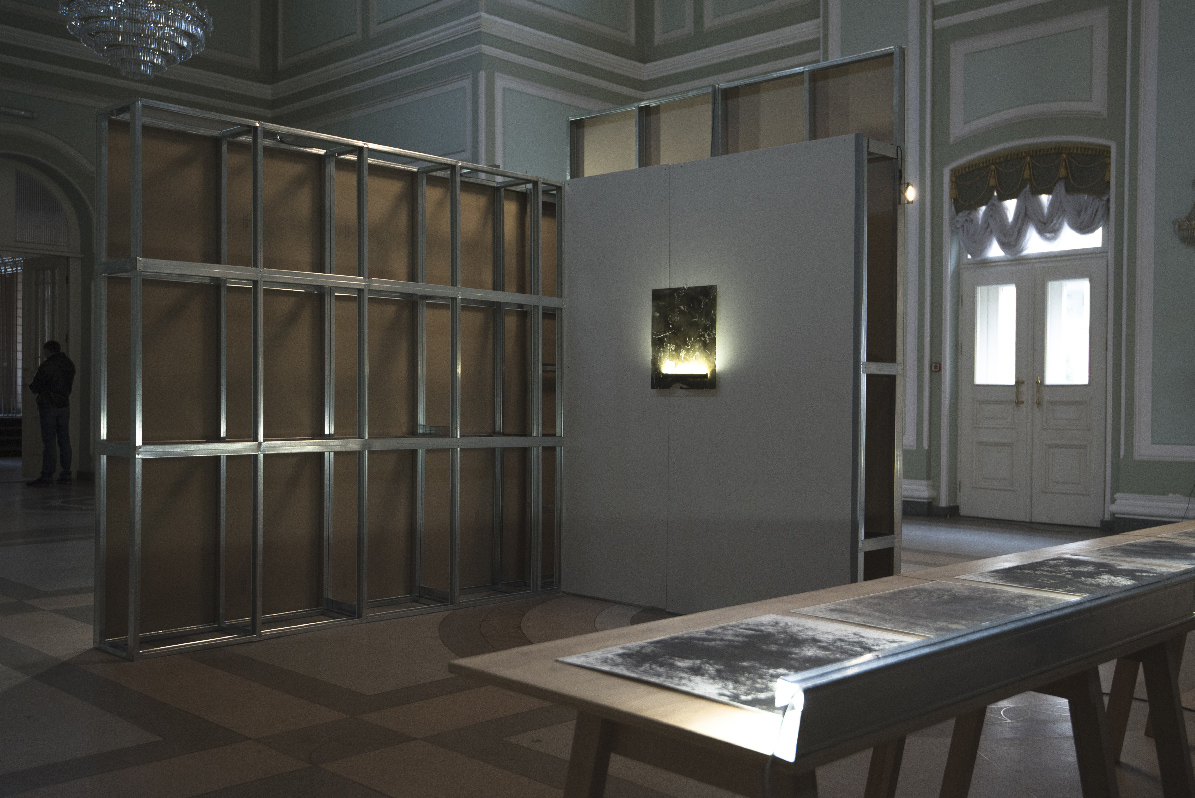 | 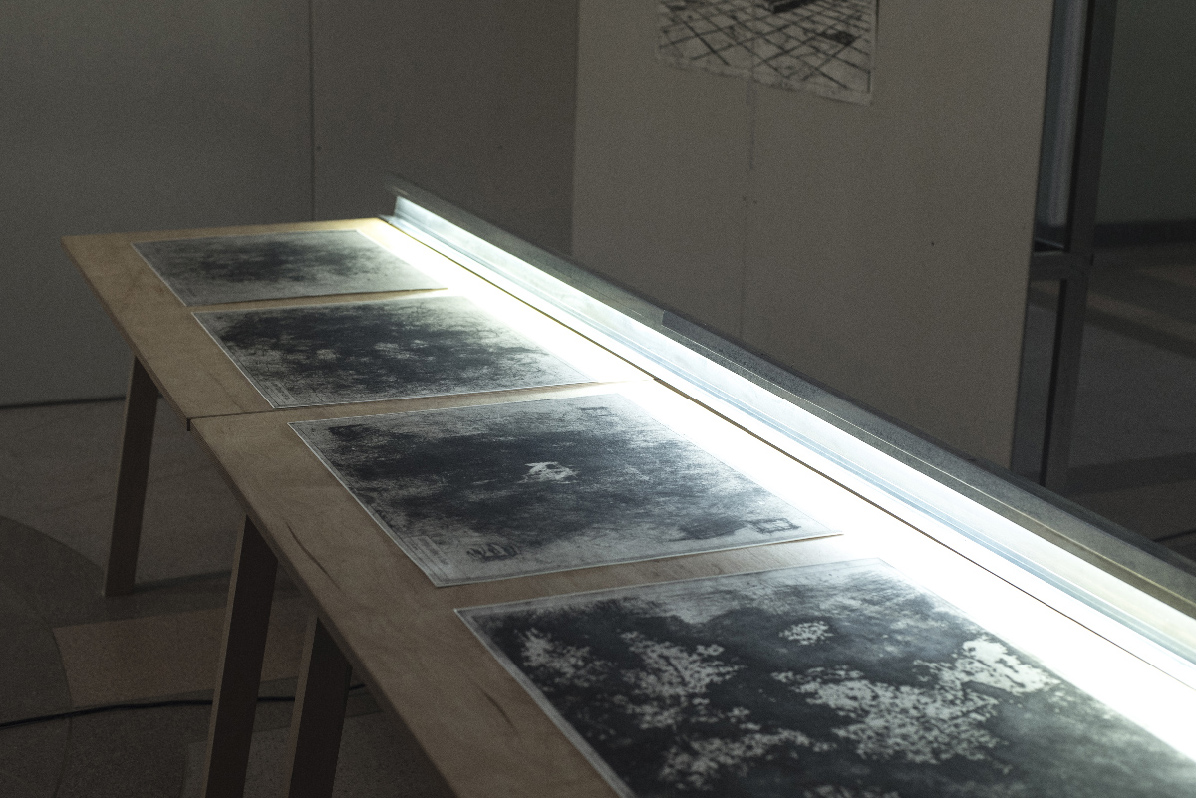 | 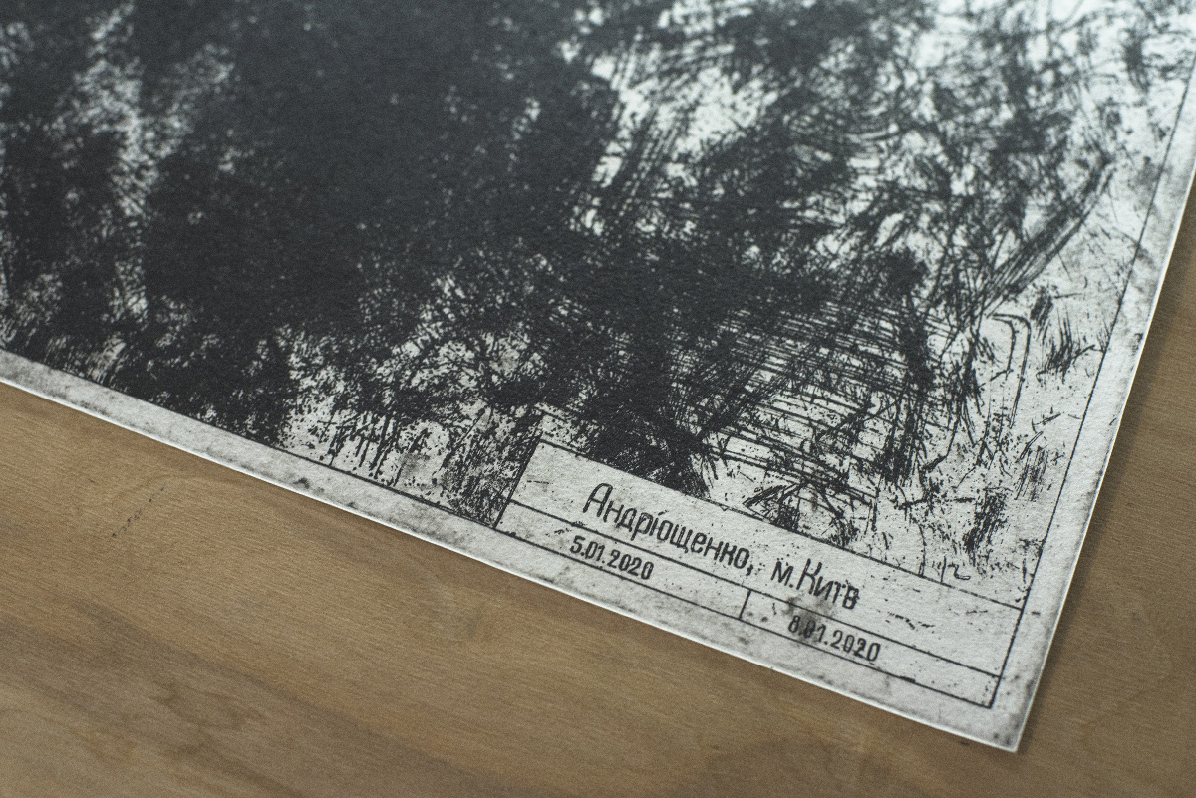 | 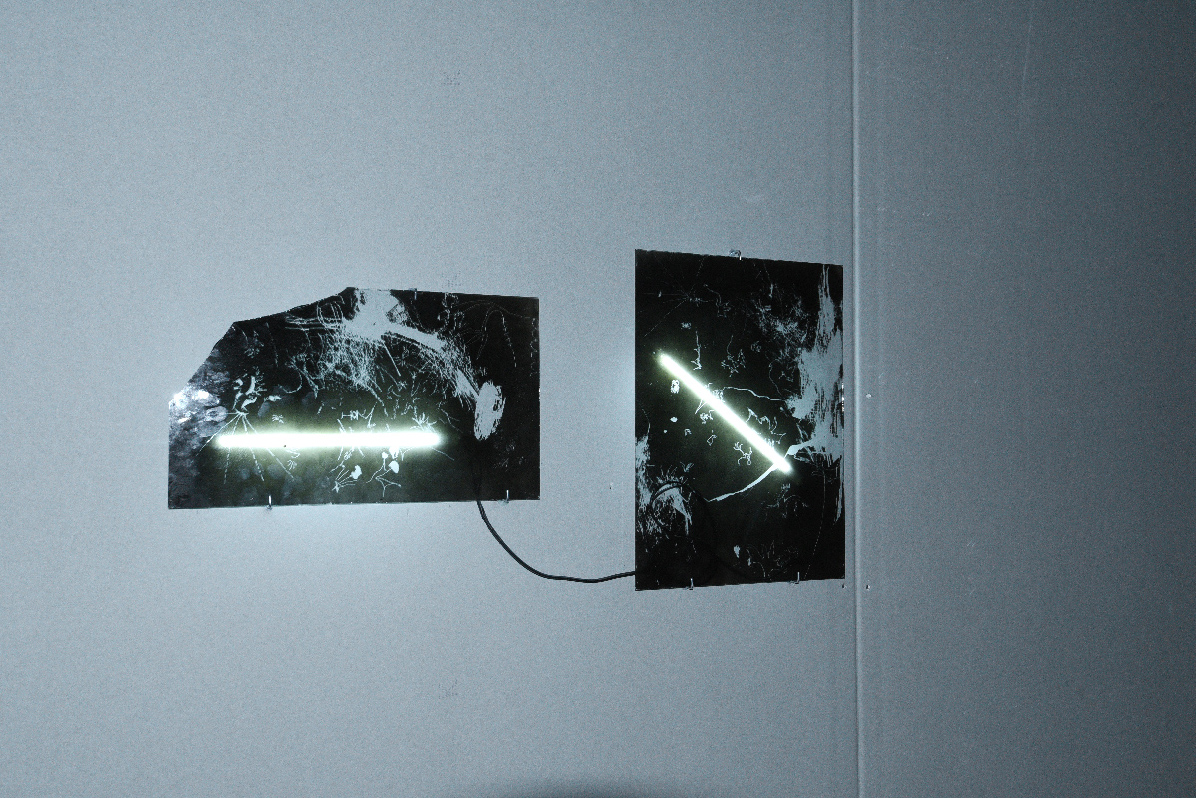 |